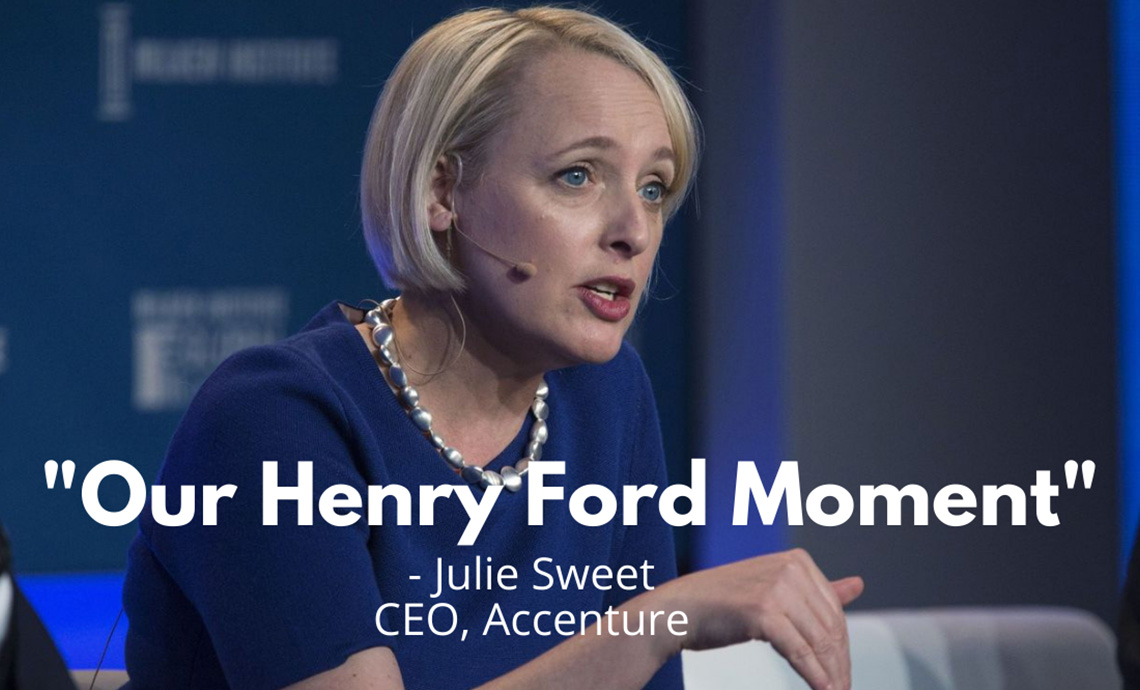 Terry Dowdy is a 23-year association IT veteran – he has managed the IT departments at four associations and is currently IT Director at the Tax Executives Institute (TEI). In 2019, Terry and TEI decided to use advanced data analytics to help reach organizational goals and they selected the Nucleus solution to do this. In sharing his experiences and recommendations, he writes:
Terry Dowdy is a 23-year association IT veteran – he has managed the IT departments at four associations and is currently IT Director at the Tax Executives Institute (TEI). In 2019, Terry and TEI decided to use advanced data analytics to help reach organizational goals and they selected the Nucleus solution to do this. In sharing his experiences and recommendations, he writes:
“I hope to help somebody out there – we were making decisions that were not necessarily data driven. They were anecdotally driven. We really were flying kind of blind when we think about it now, and I hope this helps others at associations in similar situations”.
Right off the bat, it was easier for staff to be able to go in and look at the data through Nucleus than going in and running a query through NetForum, because even though NetForum is an excellent AMS, queries aren’t the easiest thing in the world to learn if you do not come from a data background. Sometimes they can be confusing. Nucleus avoids all that, it provides straight data and lets us know what’s happening. A fantastic side effect was that staff was able to see where we had problems with our data, typically data that was missing or incomplete. Like all associations, we had some bad data, and one of the unexpected benefits of Nucleus was that it was so helpful in making incomplete data really obvious and so much easier to fix. In order to clean it up, we had to identify it, and Nucleus really helped us do that. Overall, with everyone having a dashboard, the answers were just there. Nucleus made it so much simpler for each of our different types of users so it was easier to get them involved in using it. Now it’s not about the query or the system, it’s all about data and the results of that data and what we’re going to do with it. Today, everyone is focusing on doing their jobs and reaching goals, because they don’t have to worry about spending time running queries, what they learned two months ago about running an export into Excel, etc.
The executive dashboard in Nucleus has been fantastic – not just for individuals but also for committees. Our Membership Committee includes volunteer leaders and members of our board and they are tasked with retention and renewals and their Nucleus dashboard is giving them a tool to really dig down and see what’s going on with our membership, who our members are, and where they’re coming from.
Because of COVID, we had to pivot to a virtual annual conference for the first time – we went all virtual this year, just concluded as a matter of fact, and we had increased attendance and more revenue than we normally would have. Nucleus allowed us to see the registrations, their chapters and geographic regions and everything else almost instantaneously – such an improvement – even chapter leaders could see this and of course, it’s visual so it’s much easier for everyone to comprehend and understand. An example (a Nucleus screen shot):


Data Analytics for Membership
This second set of visualizations is great, and they really allow our membership committee and also our other members of our membership staff and our board to go in and look and see who our members are, where they break down as far as gender, and by the length of their careers (that’s what “tenure” means in the bottom left hand corner – how many years have they spent in the corporate tax world), and then we the numbers by age on the top right hand corner. I also regularly use the filters. I have that open on my screen so I can click and basically change this data as I need to – that’s really fantastic. It allows me to see so many different insight that ordinarily, I would have to spend a lot of time in queries and SQL and Excel, massaging it – and don’t get me started on trying to create charts.
y, data is really easy for everybody to use and understand and also to make decisions on. As mentioned, one thing that we weren’t doing with data was using it to decide where to hold our educational offerings, our seminars, our courses and our conferences. We were going with just anecdotal data, like “Where is the largest chapter? Let’s hold it there this year. How many chapters are around the city? Let’s hold our course there.” Now we have data to drive that decision, and we’ll know specifically where our attendees are coming from for every course. It’s not just our conferences, we also have an array of four-day courses in tax and federal tax, we have another array of three-day seminars, and these things are important and major revenue streams for us. We really need to make the right decisions. Something I really want to emphasize for anyone reading this is the importance of knowing where your data needs improvement. One of the things we were told was that Nucleus would be a big help in identifying bad data. We are finding where we need to improve our data and that’s huge. Like I said earlier, everybody has bad data, we all know it. We all have it, we all struggle with trying to clean it up and keep it clean. Nucleus gives us a way of seeing at a glance where that problem is, and what records that problem affects and what we need to do to fix it. That’s just fantastic. That saves so much time – and also, these are the type of tasks that usually get pushed to the side because something else is more important. But it’s so quick to do this, that it’s easy to say, OK, these records need to be fixed, and then pass that off to the membership coordinator or whoever the appropriate person is to work on them and they can see for themselves right away what needs to be done.
Looking back, I would tell anyone who is thinking about a data analytics solution to prioritize this project – regardless of the solution, make this a priority. Once we decided we needed one, we thought we would get it quickly, but then other projects were coming up and took our attention and that delayed us. So that’s the one thing I’ll recommend, make analytics a priority because the overall impact is so positive. I would also say to be patient and manage your expectations, because once you have a solution you will be able to see your data and identify problems, but you are not going to solve all of your problems right away. Nucleus gives you the tools you need, but you still need to be patient and use them.
Next, we plan to look at our members’ individual interests and boost committee participation. Historically, participation by members in committees is lower than we’d like, and we think part of the problem is that lots of members, especially newer ones, likely don’t know that we have so many committees focused on very specific subjects – we have committees like a Federal Income Tax Committee, a Canadian Indirect Tax Committee – committees focused on areas that these corporate tax professionals are interested in. We are excited to use Nucleus to bring together everything we know about their interests and use that to match them up with appropriate committees.


